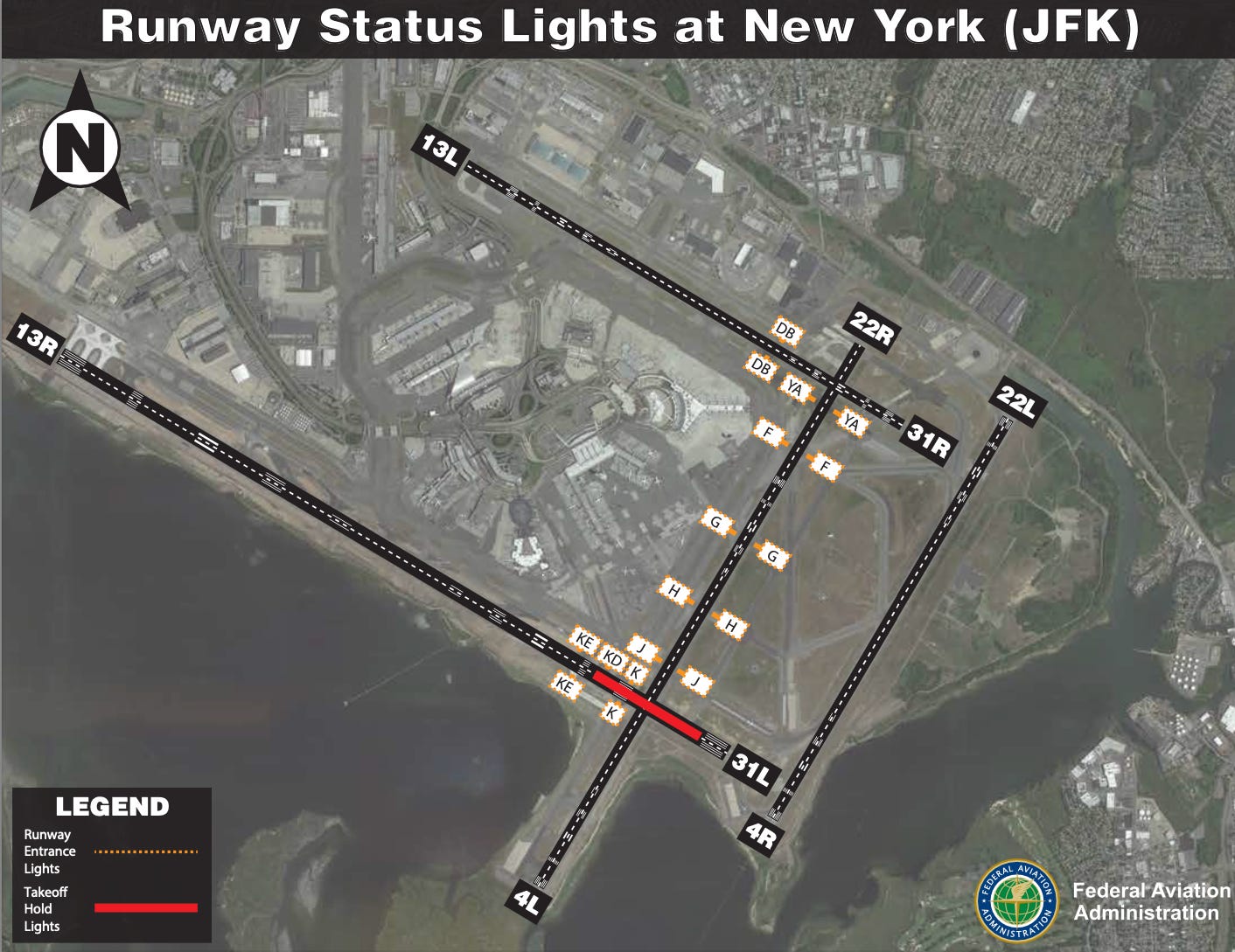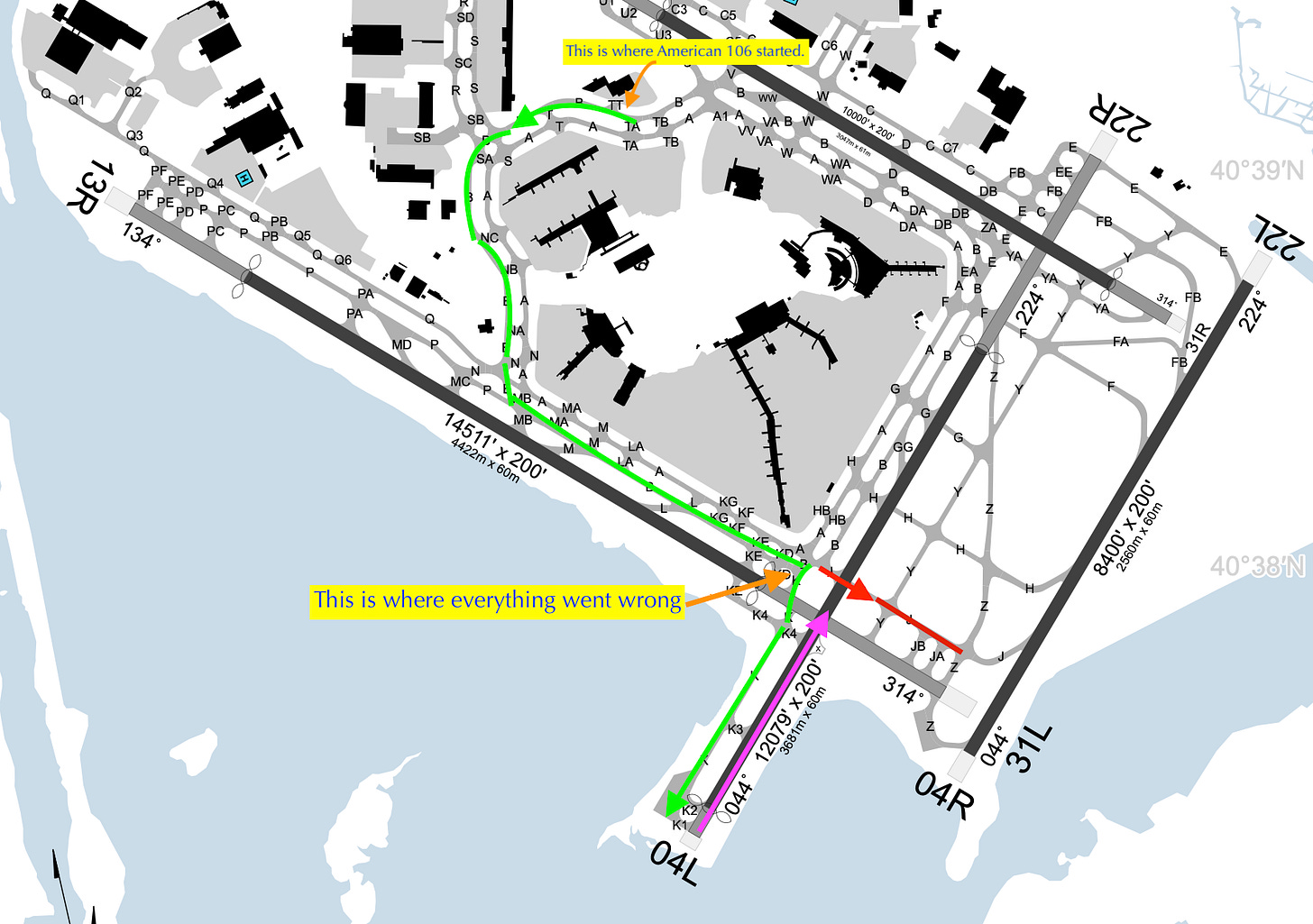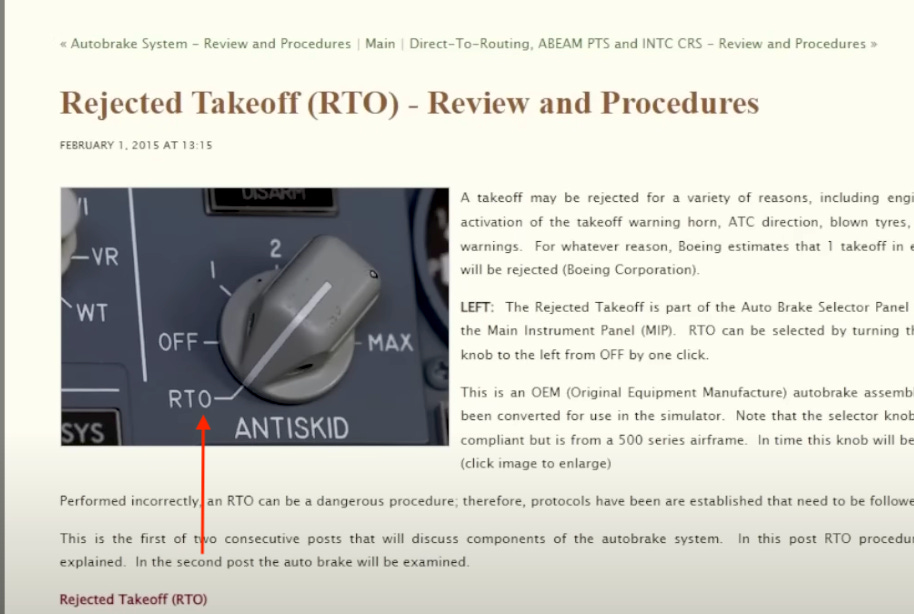Update: The Passengers at JFK Last Week Were Very Lucky
This could have been a catastrophe. How the aviation world will try to learn from it.

This post is a followup to my previous report on the January 13 runway incursion at JFK airport in New York. I’ll do this Q-and-A style, quoting some comments on the original post, plus data, analyses, and insights that have appeared in a variety of sources.
(Then we’ll get back to the world of the debt ceiling, coverage of presidential documents, Future of the Press, and so on.)
Does this look like a bigger deal, or a smaller one, as more info comes in?
Bigger.
As mentioned earlier, the world’s deadliest-ever airline crash happened in 1977, when a KLM 747 carrying nearly 250 people accelerated for takeoff on a foggy day at the Tenerife airport in the Canary Islands. It smashed right into another 747, flown by Pan Am and carrying nearly 400 people, that was taxiing on the same runway. Both planes erupted into fireballs, and a total of 583 people were killed.
This is why the aviation world is so concerned about “runway incursions,” especially on takeoff and landing, when one plane is going very fast and another is sitting on the ground.
In the recent JFK case, when an American Airlines 777 crossed the path of a Delta 737 that was accelerating for takeoff, probably the two airplanes would have just missed. Probably the American plane would have lumbered its way across the 200-foot width of Runway 4 Left, before the Delta plane reached that point, 4000 feet into its takeoff roll. If not, possibly the Delta plane could have forced itself into the air by then.
Probably. Possibly. But aviation safety is not built on those words. It is built on what if. And as the airline pilot and popular YouTube aviation analyst Juan Browne put it yesterday, the JFK mishap “had the potential of being one of the worst aviation accidents in recent history.”
What path did the American plane take before reaching the fateful intersection?
American flight 106, bound for London, started out at the “Tango Alpha” intersection in the northwest corner of the Kennedy airport, and taxied for departure toward the southeast corner of the airport. The points are connected by taxiway Bravo, which runs in roughly a circle around the terminals.
Initially I thought that the plane had taxied clockwise along Bravo, making a big right-hand turn. It has become clear that instead it taxied counterclockwise, making a big left-hand turn. This doesn’t affect any of the fundamentals of the story. But it means that the plane’s path was like the one shown below, in green, rather than the one I originally depicted:
On this counter-clockwise path, the American plane was supposed to make the sharp right turn from Bravo onto the Kilo taxiway, toward the departure end of runway 4 Left. (As shown in green.) Instead it rolled straight ahead, onto taxiway Juliet and across runway 4 Left. (As shown in red.) The takeoff path of the Delta plane is in magenta.
The counter-clockwise path changes the plane’s angle of approach to the Kilo/Bravo intersection, but it does not change the fundamental issue.
What is the fundamental issue?
It boils down to this:
—The American plane was cleared to a certain runway (4 Left), and cleared to cross a different runway (31 Left). It did just the reverse. It taxied to 31 Left, and in so doing it crossed 4 Left.
No one yet knows why. At takeoff the American crew would presumably have had three fully qualified pilots in the cockpit. The captain would be in the left seat, working the “tiller” to steer the plane along the ground. The first officer would be in the right seat and typically would be working the radios. For a long trans-oceanic flight like this, a relief pilot would typically be in the cockpit as well, as a third set of eyes.
Somehow all three of them mistook the taxi instructions, the abundant runway signage, their own airport charts, and other indicators of where they were supposed to go. The reasons why are to be explored.
What were the crucial interventions?
From the controllers: ordering the Delta plane to “reject” its takeoff before it had gained enough speed to make that impossible. Without the controllers’ instruction, and at night, would the Delta pilots have seen the problem on their own, in enough time to stop? We don’t yet know.
The controllers also ordered the American flight to stop taxiing any further down its mistaken course. (It must have been clear of Runway 4 Left, on taxiway Juliet, by the time the controller yelled “Hold Position.” Otherwise the controller would have instructed it to keep moving, and to clear the runway immediately.)
From the Delta crew: successfully executing the “rejected takeoff” (RTO) procedure they would have reviewed as part of the briefing before every single takeoff.
What happened next to the two planes, their passengers, and their crews?
According to the authoritative Aviation Herald, the American plane went on to London, with the same crew, about 30 minutes later. The Delta plane was on the ground for about 15 hours and then went onto Santo Domingo. I assume this was with a different crew. I don’t know about the passengers.
What will happen to the American crew?
I don’t know. At best they’ll help the aviation world understand what happened, and why, and what further preventive measures to take.
Have things like this happened before?
Apart from the 1977 Tenerife disaster, one similar close-call episode occurred in 1985 at the Minneapolis airport. As reader Brent Stahl noted in a comment on the previous post, one DC-10 was cleared for takeoff in Minneapolis, just as another DC-10 was cleared to cross the same runway. By the time anyone recognized the problem, the plane on takeoff was going too fast to stop. So its flight crew pulled the nose up while still below normal takeoff speed. It barely cleared the other plane.
Also, as reader Alan Forkosh noted in a comment on the previous post, in 2017 an Air Canada plane landing in San Francisco at night mistook a taxiway, where four other airliners were queued up for departure, for the runway where it had been cleared to land. The Air Canada plane descended low enough to come within 60 feet of crashing into the other planes from above. As Forkosh points out, the NTSB summary of the near-disaster is chilling.
For perspective: around the world, some 100,000 airline flights safely take off and land every day. But when things go wrong, they really go wrong.
Was this related to the recent ‘NOTAM shutdown’?
No.
Earlier this month airline flights were grounded for several hours, because the FAA’s ‘NOTAM’ system—previously known as ‘Notice to Airmen,’ now ‘Notice to Air Mission’—was out of service after a computer problem.
NOTAMs are a widely-discussed issue in aviation management. You can think of them as being like the zillion-page “End User Agreement” you have to click before any software upgrade. Like those, NOTAMs can contain endless words of boilerplate, wrapped around little nuggets of vital information. (For instance: that a certain runway is closed, or that a surprise no-fly zone has been created because of an unscheduled presidential trip.) Information buried in NOTAMs could have played a role in the Air Canada SFO close call, for reasons the NTSB report lays out.
But this didn’t play a part at JFK. The American Airlines crew had all the info they needed. They just acted on it the wrong way.
Could this have been related to a recent change in American cockpit procedures? I don’t know. It’s one avenue investigators will explore.
What Is To Be Done
In the many decades since the Tenerife collision and the Minneapolis close call, the FAA has put huge resources into keeping flight crews from making mistakes like this. The experienced pilot, flight instructor, YouTube star, and former Microsoft Flight Simulator executive Bruce Williams points out some of the FAA’s technical innovations in a comment on the previous post. (And he points to this site too.) The image at the top of this post shows runway-light systems designed to warn pilots when it is unsafe to cross. The FAA and NTSB will consider what else they can do.
What is the main thing that I, personally, have learned about this episode?
It involves the “rejected takeoff” procedure that brought the Delta plane to a screeching halt.
In any airplane of any kind, before you push in the power for takeoff, you’re supposed to go through a takeoff briefing. What to do if the engine fails—or a bird hits your windshield, or a deer comes onto the runway, or a tire blows out (most of these have happened to me)—before you get to a certain speed. What to do if things go wrong once you’re past that speed, and there’s not enough runway to stop. What to do if the engine fails when you’re 400 feet off the ground. What if it fails at a thousand feet. And so on.
I’ve done this lots of times in little single-engine airplanes. But I have never been in the cockpit of an airliner at takeoff. And I did not know, until I got to time 9:30 of this fascinating Juan Browne video, about the way airline pilots “arm” the automatic braking system in their Boeing or Airbus airplanes, to slam the plane to an immediate, skidding stop if they have to execute an RTO.
Here’s an image, from Juan Browne, of how the pilots set the auto-brake system to do just what the Delta plane did:
As Browne says, “This braking action is done automatically… It’s going to take all 3000 psi of the hydraulic system and jam on those brakes as hard as possible.” That is what the controllers ordered, and the Delta flight crew executed, and the passengers experienced—to avoid what could have been far worse.
There will be more questions and answers to come.




Great recap, Jim. What jumps out at me (again) is how serious the aviation industry is about performing postmortems - even when no metal is bent and nobody is hurt! As you say, we will learn from this, and some minor change to procedure or technology will result. We have certainly adopted a near religious mindset of "Black Box Thinking" (Matthew Syed's phrase).
I can't help but think that is a key reason there were zero fatal accidents in 2022 for either US airlines or US-registered business jets. That is a truly staggering statement, but one we sort of take for granted. Many other industries - including, as you have so often written, the media - could learn from pilots.
Wow. Frighteningly fascinating. And yet, I know that commercial flight is far safer than automobiles.
Your interest in this stuff is contagious.